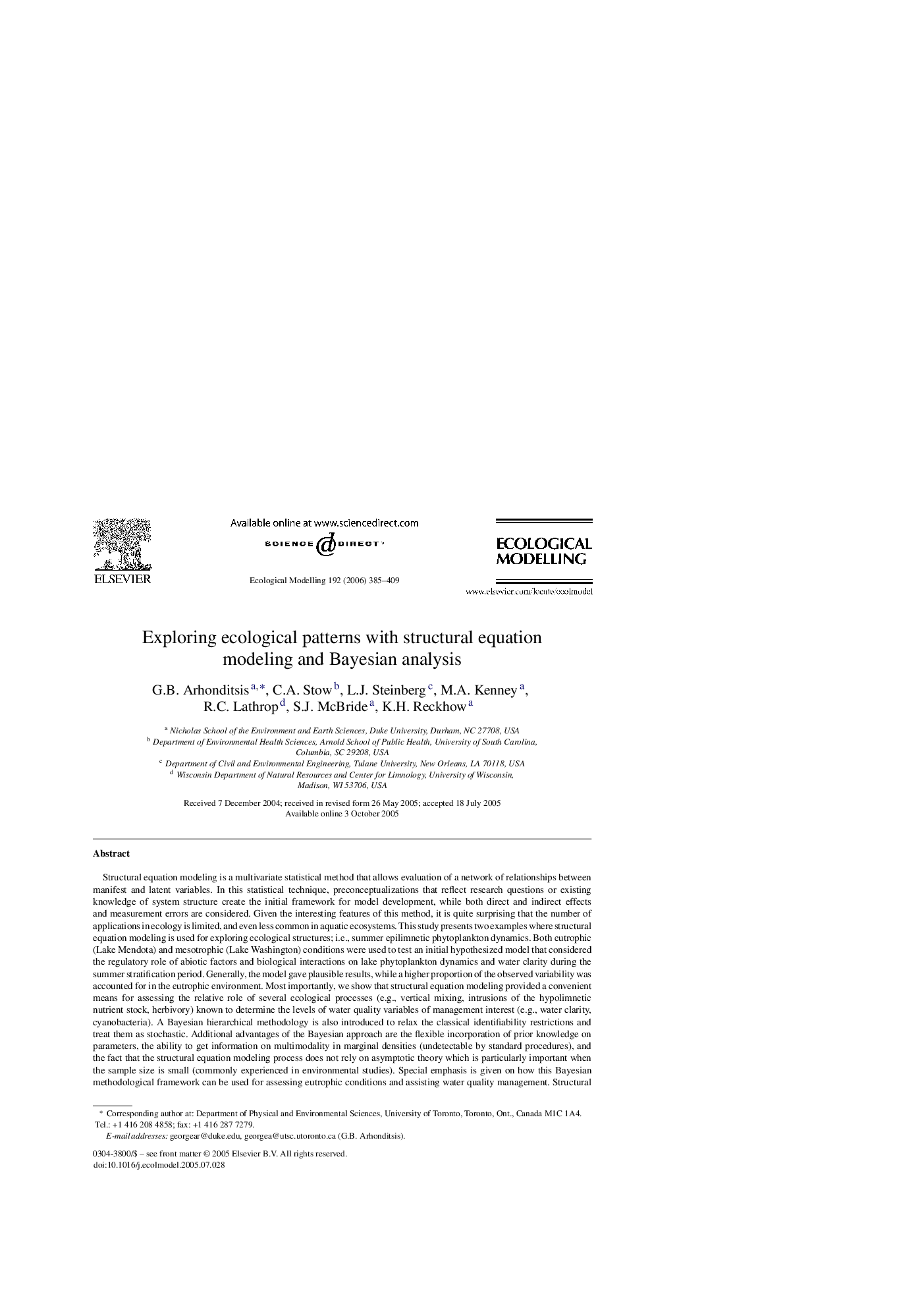| کد مقاله | کد نشریه | سال انتشار | مقاله انگلیسی | نسخه تمام متن |
|---|---|---|---|---|
| 4379285 | 1617568 | 2006 | 25 صفحه PDF | دانلود رایگان |

Structural equation modeling is a multivariate statistical method that allows evaluation of a network of relationships between manifest and latent variables. In this statistical technique, preconceptualizations that reflect research questions or existing knowledge of system structure create the initial framework for model development, while both direct and indirect effects and measurement errors are considered. Given the interesting features of this method, it is quite surprising that the number of applications in ecology is limited, and even less common in aquatic ecosystems. This study presents two examples where structural equation modeling is used for exploring ecological structures; i.e., summer epilimnetic phytoplankton dynamics. Both eutrophic (Lake Mendota) and mesotrophic (Lake Washington) conditions were used to test an initial hypothesized model that considered the regulatory role of abiotic factors and biological interactions on lake phytoplankton dynamics and water clarity during the summer stratification period. Generally, the model gave plausible results, while a higher proportion of the observed variability was accounted for in the eutrophic environment. Most importantly, we show that structural equation modeling provided a convenient means for assessing the relative role of several ecological processes (e.g., vertical mixing, intrusions of the hypolimnetic nutrient stock, herbivory) known to determine the levels of water quality variables of management interest (e.g., water clarity, cyanobacteria). A Bayesian hierarchical methodology is also introduced to relax the classical identifiability restrictions and treat them as stochastic. Additional advantages of the Bayesian approach are the flexible incorporation of prior knowledge on parameters, the ability to get information on multimodality in marginal densities (undetectable by standard procedures), and the fact that the structural equation modeling process does not rely on asymptotic theory which is particularly important when the sample size is small (commonly experienced in environmental studies). Special emphasis is given on how this Bayesian methodological framework can be used for assessing eutrophic conditions and assisting water quality management. Structural equation modeling has several attractive features that can be particularly useful to researchers when exploring ecological patterns or disentangling complex environmental management issues.
Journal: Ecological Modelling - Volume 192, Issues 3–4, 25 February 2006, Pages 385–409